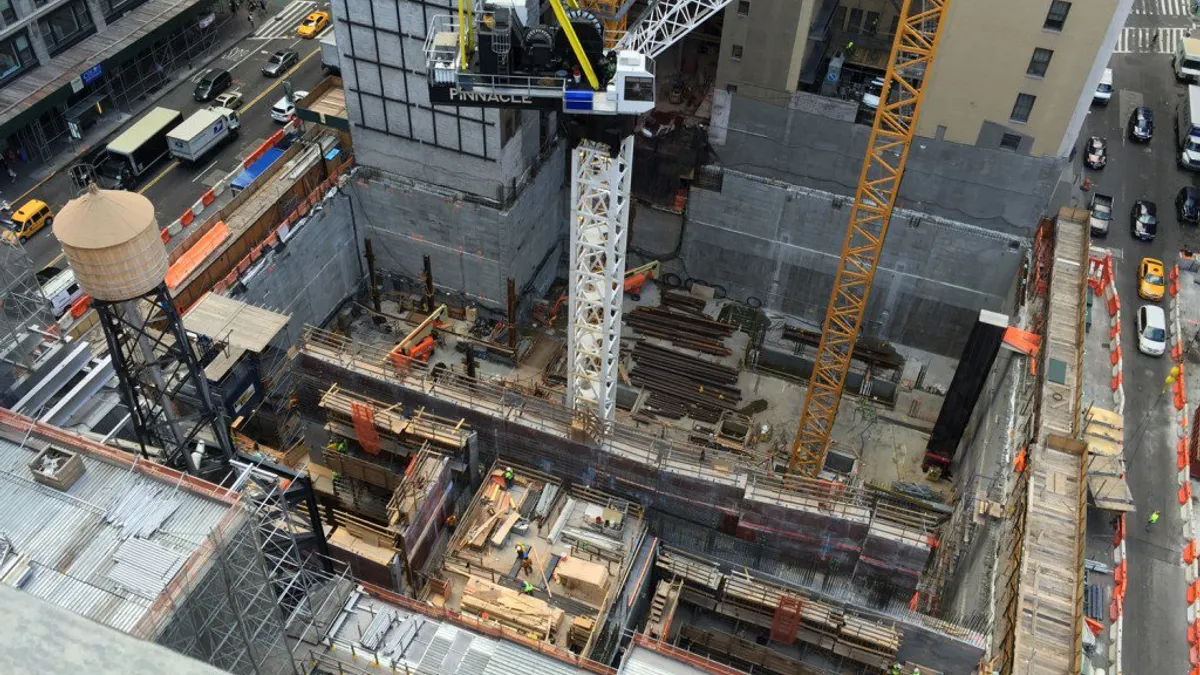Dive Brief:
- Extell Development Co., in partnership with China-based backer SMI USA, is building the 1,550-foot, $3 billion Central Park Tower, which will be the tallest residential building in the Western Hemisphere when complete, according to Bloomberg.
- SMI USA's investment is contingent on Extell being able to obtain a construction loan by May. If Extell fails to do so, it might have to pay back SMI's $300 million investment, even if that means selling the entire project.
- SMI will also receive 30% of development fees during construction and a 4.5% annual return via interest payments.
Dive Insight:
Manhattan's luxury condominium market is becoming more tepid, as evidenced by SMI's demands for increased loan security, according to Bloomberg. Although SMI could conceivably call in its investment, one real estate analyst told Bloomberg that if the project can make solid construction progress by the deadline, it might be easier to find willing lenders. The project's current loan was due Aug. 9, but lender Blackstone extended it.
Nordstrom will anchor the first seven stories of the landmark building, located in an area of Manhattan known as Billionaire's Row. Designers at Adrian Smith + Gordon Gill Architecture are also behind the current world's tallest building, the Burj Khalifa in Dubai and its apparent soon-to-be successor, Saudi Arabia's $1.23 billion Kingdom (Jeddah) Tower, according to Multi-Housing News. In addition, SMI is also part of the Chinese group that developed the world's second-tallest building, the 121-story Gensler-designed Shanghai Tower.
Another significant skyscraper scheduled for completion this year is the 1,965-foot Ping An Finance Center in Shenzhen, China, which will be the tallest office building in the world. In addition, still in the planning stages is Iraq’s 3,780-foot Bride of the Gulf tower, which, if completed, will beat the Burj Khalifa by more than 1,000 feet.
According to the Council on Tall Buildings and Urban Habitat, 2016 is the year of "megatall" buildings , those 1,968 feet or higher. The Council said the number of such structures would more than double from three to seven in the next five years. The CTBUH also reported that more skyscrapers were built in 2015 than ever before but added that developers' current urge to race for the sky should wind down by 2020.














